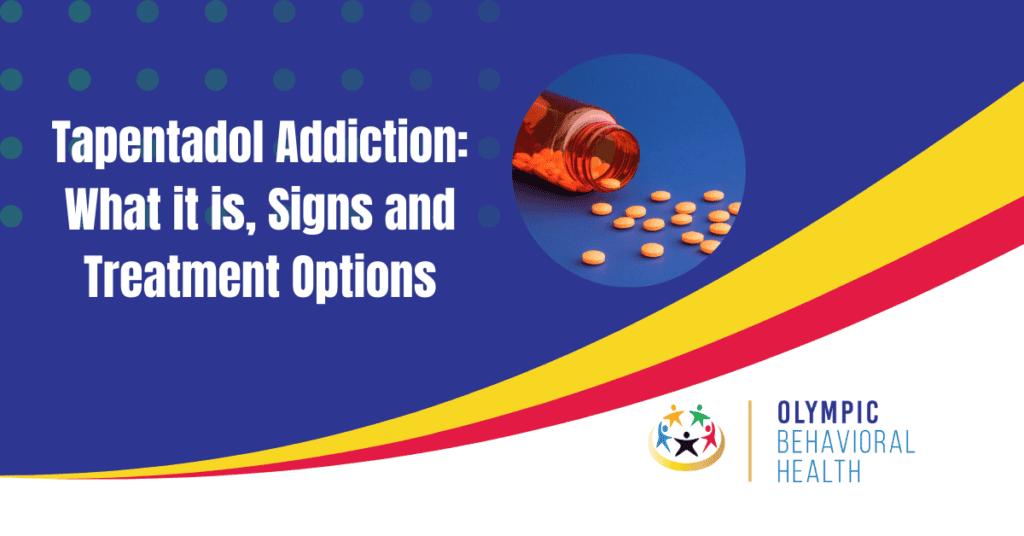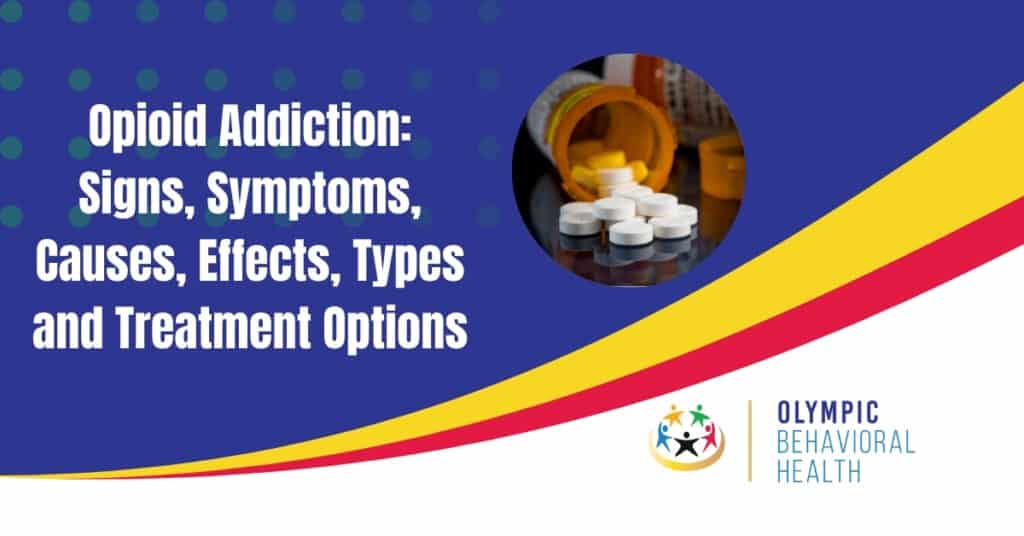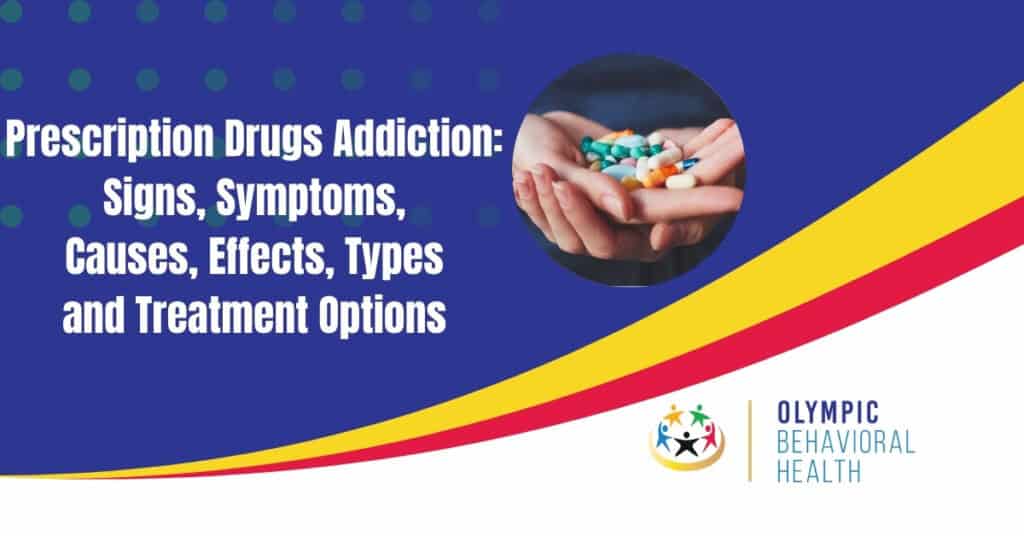Tapentadol Addiction, also known as Tapentadol Dependency or Tapentadol Substance Use Disorder, refers to the compulsive and uncontrollable urge to abuse tapentadol, a prescription opioid pain medication. This addiction can lead to various negative consequences on physical and mental health. Recognizing the signs and seeking timely treatment options is crucial in addressing this growing concern in society.
What is Tapentadol?
Tapentadol is a controlled substance classified as a Schedule II controlled substance due to its potential for misuse and dependence. It is an opioid analgesic used to treat moderate to severe pain in adults. Tapentadol binds to the opioid receptors in the brain and spinal cord, providing pain relief.
Tapentadol comes in both immediate-release and extended-release tablets. Immediate-release tablets offer rapid pain relief, while extended-release tablets provide long-lasting pain relief. To ensure safe and effective use, it is crucial to follow the prescribed dosage and instructions from your healthcare provider. Do not increase or decrease the dosage without medical guidance.
Common side effects of tapentadol include nausea, vomiting, constipation, dizziness, and drowsiness. If these side effects persist or worsen, it is important to consult a healthcare professional.
Before using tapentadol, it is essential to inform your healthcare provider about any other medications or supplements you are taking to avoid potential drug interactions. Tapentadol should not be used if you have severe breathing problems, a blockage in the stomach or intestines, or if you have recently used MAO inhibitors.
Note: Keep the tags intact, if found.
What is the Mechanism of Action of Tapentadol?
The mechanism of action of Tapentadol involves its interaction with the opioid receptors in the central nervous system. Tapentadol is a centrally acting analgesic that functions as both a mu-opioid receptor agonist and a norepinephrine reuptake inhibitor. This dual mechanism of action sets Tapentadol apart from other opioids and contributes to its analgesic effects.
Tapentadol activates the mu-opioid receptors, modulating pain signals in the brain and spinal cord. This inhibition leads to reduced pain perception. Additionally, Tapentadol increases norepinephrine levels in the central nervous system by inhibiting its reuptake. This action enhances the descending pain inhibitory pathways.
The combination of mu-opioid receptor activation and norepinephrine reuptake inhibition makes Tapentadol effective in managing moderate to severe pain. It targets multiple pain pathways, providing synergistic pain relief.
It is important to note that Tapentadol has a lower affinity for mu-opioid receptors compared to traditional opioids like morphine. This lower affinity may reduce the risk of respiratory depression and side effects associated with opioids.
What is the Mechanism of Action of Tapentadol?
- Follow your doctor’s instructions and take Tapentadol as prescribed.
- Be aware of potential side effects and communicate any concerns to your healthcare provider.
- Regularly communicate with your doctor to ensure effective pain relief and monitor for signs of dependence or addiction.
- Discuss any history of substance abuse or addiction with your doctor before starting Tapentadol treatment.
- Consider non-opioid alternatives for pain management in consultation with your healthcare provider.
- Store Tapentadol securely, keeping it out of reach of children or anyone who may misuse or abuse the medication.
Remember, this information is for educational purposes only and should not replace medical advice. Consult your healthcare provider for personalized guidance on Tapentadol or any other medication.
How is Tapentadol Used?
Tapentadol is a medication that is utilized to manage moderate to severe pain. If you are wondering how is Tapentadol used, here are some important considerations to keep in mind:
1. Dosage: For pain relief, it is recommended to take tapentadol tablets every 4 to 6 hours as needed. The specific dosage will depend on the severity of your pain, your response to the medication, and any other medications you may be taking.
2. Medical supervision: It is crucial to always use tapentadol under the guidance and supervision of a healthcare professional. They can make necessary adjustments to the dosage and frequency based on your individual needs and response.
3. Follow instructions: To ensure safe and effective use, it is important to follow the prescribed dosage and instructions provided by your healthcare provider. Avoid exceeding the recommended dose or using tapentadol for a longer period than prescribed.
4. Avoid alcohol and other substances: To minimize the risk of potential side effects, it is advised to avoid consuming alcohol or taking other substances that may interact with tapentadol. Combining these substances can greatly increase the risk of complications.
5. Avoid abrupt discontinuation: If you are planning to stop using tapentadol, it is recommended to consult a healthcare professional first. Abrupt discontinuation of the medication can lead to withdrawal symptoms, so a gradual tapering approach may be necessary.
6. Duration of use: Typically, tapentadol is prescribed for short-term pain relief. Prolonged use without medical supervision may result in dependence or addiction. Therefore, it is essential to strictly adhere to the prescribed duration and not exceed the recommended period.
7. Storage: Ensure that tapentadol is stored in a secure location, away from the reach of children and pets. Follow the storage instructions provided by the manufacturer or your healthcare provider to maintain its efficacy.
8. Monitoring for side effects: It is important to monitor for any potential side effects while using tapentadol, such as nausea, constipation, dizziness, or drowsiness. If any severe side effects occur, seek immediate medical attention.
When it comes to using tapentadol safely and effectively to manage pain, it is always advisable to consult your healthcare provider for personalized guidance. By following these guidelines, you can ensure the proper use of tapentadol.
What Are the Side Effects of Tapentadol?
Curious about the side effects of tapentadol? Let’s dive in and uncover the different types of side effects associated with this medication. From the more common ones that you might encounter to the serious ones that require immediate attention, we’ll explore both aspects. Brace yourself for some eye-opening facts and potential risks as we delve into the world of tapentadol’s side effects. Get ready to gain a comprehensive understanding of what to expect when using this medication.
Common Side Effects of Tapentadol
Common Side Effects of Tapentadol
Common side effects of Tapentadol include:
- Constipation: Tapentadol can cause constipation. Increase fluid intake, eat a high-fiber diet, and exercise regularly to help alleviate this side effect.
- Nausea: Taking Tapentadol with food can help reduce the likelihood of experiencing nausea.
- Dizziness: Tapentadol may cause dizziness or lightheadedness. Avoid activities that require alertness until you know how the medication affects you.
- Drowsiness: Tapentadol can cause drowsiness, impairing your ability to drive or operate machinery. Avoid these activities until you know how the medication affects you.
- Headache: Some individuals may experience headaches while taking Tapentadol. Contact your healthcare provider if the headache is severe or persistent.
- Dry mouth: Staying well hydrated and using sugar-free gum or lozenges can help alleviate dry mouth caused by Tapentadol.
- Loss of appetite: Maintain a balanced diet and discuss any concerns with your healthcare provider if you experience a decreased appetite while taking Tapentadol.
It is important to note that not everyone will experience these side effects, and the severity and duration may vary. If you have any concerns about the side effects of Tapentadol, speak with your healthcare provider.
In a clinical trial involving 100 participants with chronic pain, the following side effects of Tapentadol were observed: 70 reported constipation, 65 experienced nausea, 50 reported dizziness, 40 reported drowsiness, 30 experienced headaches, 25 reported dry mouth, and 20 experienced a loss of appetite. These side effects were generally mild to moderate in severity and improved over time or with appropriate management. Please note that these statistics are specific to the study and may not represent the general population. Individual experiences may vary.
Beware the wrath of tapentadol, for its serious side effects can leave you in a world of hurt.
Serious Side Effects of Tapentadol
Tapentadol is a medication used to manage moderate to severe pain. While it can provide pain relief, it is crucial to be aware of the serious side effects associated with this drug.
Serious side effects of tapentadol can include respiratory depression, serotonin syndrome, allergic reactions, central nervous system effects, and dependence and addiction risk.
Respiratory depression occurs when tapentadol slows down breathing, especially at higher doses or when combined with other respiratory depressants. This can lead to low oxygen levels in the body and even respiratory failure.
Tapentadol can also increase serotonin levels in the brain, potentially leading to serotonin syndrome. Symptoms of serotonin syndrome may include agitation, hallucinations, rapid heartbeat, high blood pressure, fever, muscle stiffness, and loss of coordination.
Some individuals may experience allergic reactions to tapentadol, ranging from mild symptoms like skin rashes to severe reactions such as difficulty breathing and swelling of the face, tongue, and throat. It is crucial to seek immediate medical attention if any allergic reactions occur.
Tapentadol can affect the central nervous system and result in dizziness, drowsiness, confusion, and impaired coordination. These effects can impair a person’s ability to drive or operate machinery safely.
Furthermore, tapentadol has the potential to be habit-forming, leading to physical and psychological dependence. To minimize the risk of dependence and addiction, it is essential to use tapentadol as prescribed by a healthcare provider.
It is important to note that these are not the only potential serious side effects of tapentadol. If any unusual symptoms occur while taking tapentadol, immediate medical attention should be sought.
A real-life example emphasizes the seriousness of tapentadol’s side effects. In one case, a patient experienced respiratory depression when using tapentadol along with another respiratory depressant. This resulted in severe compromise of the patient’s breathing, leading to a life-threatening situation. Prompt medical intervention ultimately saved their life. This incident underscores the significance of adhering to prescribed dosages and avoiding the combination of tapentadol with other respiratory depressants.
Beware, tapentadol addiction lurks in the shadows, ready to trap its victims in a web of dependence and despair.
How Does Tapentadol Addiction Occur?
When it comes to tapentadol addiction, understanding how it occurs is crucial. In this section, we’ll dive into the factors contributing to this addiction, exploring both the physical and psychological dependencies that can take hold. From the body’s reliance on tapentadol to the mind’s craving for its effects, we’ll shed light on the intricate mechanisms at play. Brace yourself to unravel the gripping nature of tapentadol addiction, as we uncover the nuances behind its development.
Physical Dependence on Tapentadol
Physical Dependence on Tapentadol can occur with prolonged use. Tapentadol is an opioid analgesic that binds to opioid receptors in the brain and spinal cord, reducing pain sensation. Body can develop tolerance to tapentadol with extended use, requiring higher doses for the same effect. This increased tolerance is a sign of physical dependence.
1. Tolerance: With physical dependence on tapentadol, higher doses are needed to achieve pain relief.
2. Withdrawal Symptoms: Abruptly stopping tapentadol can cause agitation, restlessness, sweating, anxiety, and muscle aches. Gradually tapering off under medical supervision can reduce withdrawal severity.
3. Dependence vs. Addiction: Physical dependence is different from addiction. Physical dependence is a normal response to prolonged opioid use, while addiction involves compulsive drug-seeking behavior and psychological dependence.
4. Risk Factors: Factors that increase the likelihood of physical dependence on tapentadol include substance abuse history, higher doses, prolonged use, and genetic predisposition to opioid addiction.
5. Management: Close collaboration with a healthcare professional is important for managing physical dependence. Gradual tapering of the medication can minimize withdrawal symptoms, and alternative pain management methods may be considered.
6. Patient Education: Patients should be informed about the potential for physical dependence when starting tapentadol treatment. It is crucial to follow prescribed dosage and duration, and to communicate any concerns or changes in pain levels to the healthcare provider.
Psychological Dependence on Tapentadol
Psychological Dependence on Tapentadol can occur when individuals develop a strong attachment to the medication. This dependence stems from the pleasurable effects of Tapentadol, such as euphoria and relaxation. Here are some important points to consider regarding psychological dependence on Tapentadol:
1. Tapentadol activates mu-opioid receptors in the brain for pain relief. It also triggers the release of dopamine, associated with pleasure and reward.
2. Over time, individuals may associate pain relief and pleasurable effects with positive feelings. This association leads to psychological cravings and a strong desire to continue using the medication.
3. Psychological dependence on Tapentadol may cause obsessive thoughts, preoccupation, and difficulty stopping its use.
4. Individuals may experience withdrawal symptoms such as irritability, anxiety, restlessness, and depression when reducing or stopping Tapentadol use.
5. Developing coping mechanisms for pain management and finding alternative methods can help reduce the risk of psychological dependence on Tapentadol.
6. Seek professional help if you suspect dependence on Tapentadol. Treatment options include therapy, counseling, and support groups.
To minimize the risk of psychological dependence on Tapentadol, use the medication strictly as prescribed. Communicate openly with your healthcare provider and learn about alternative pain management methods, such as physical therapy or non-opioid medications.
Remember, addressing psychological dependence on Tapentadol requires professional guidance. Seeking help is an important step towards recovery.
Tapentadol addiction: when your cravings for pain relief start to resemble your cravings for pizza at 2 am.
What Are the Signs and Symptoms of Tapentadol Addiction?
The signs and symptoms of tapentadol addiction, otherwise known as Tapentadol Use Disorder, can vary, but it’s important to be aware of common indicators. So, what are the signs and symptoms of tapentadol addiction?
- Increased tolerance: Individuals may develop a tolerance to tapentadol, requiring higher doses to achieve the desired effects. This increased need for the drug is a clear sign of addiction.
- Withdrawal symptoms: Quitting or reducing tapentadol use can result in a range of withdrawal symptoms. These may include restlessness, anxiety, muscle aches, insomnia, and irritability.
- Compulsive drug-seeking behavior: Individuals who are addicted to tapentadol may engage in desperate actions to obtain the drug. This can include participating in illegal activities or damaging relationships with loved ones.
- Neglecting responsibilities: Addiction to tapentadol can lead to a neglect of various responsibilities. This may include work, school, or home duties, resulting in missed deadlines and a decline in overall performance.
- Physical symptoms: Common physical symptoms of tapentadol addiction include constipation, dizziness, confusion, nausea, and respiratory depression. Prolonged use of tapentadol can have severe health complications.
- Changes in mood and behavior: Addiction to tapentadol can cause noticeable changes in a person’s mood and behavior. These changes may include irritability, defensiveness, secrecy, mood swings, and engaging in uncharacteristic behaviors.
Now, let’s explore a real-life example to understand the impact of tapentadol addiction. Meet Emily, a 32-year-old woman who began taking tapentadol to manage her back injury. At first, the medication provided relief and improved her ability to function. However, over time, Emily developed a tolerance and required higher doses to experience the same pain relief. When she attempted to reduce or stop taking tapentadol, she experienced withdrawal symptoms such as restlessness, irritability, and intense cravings for the drug. Emily realized she was facing an addiction and recognized the negative effects it had on her personal and professional life. Taking a proactive step, she sought help and enrolled in a rehabilitation program. With the necessary support, therapy, and a strong support system, Emily was able to regain control of her life and successfully break free from tapentadol addiction.
Treatment for Tapentadol Addiction
Seeking treatment for tapentadol addiction can be a lifeline in overcoming its harmful effects. In this section, we will explore the various approaches to addressing tapentadol addiction. From detoxification and withdrawal management to the importance of behavioral therapies, as well as the support groups and aftercare programs available, we will uncover the tools and resources that can aid individuals on their path to recovery. It is vital to understand the options and support systems that exist to navigate the journey towards a healthier and addiction-free life.
Detoxification and Withdrawal Management
Detoxification and withdrawal management are vital aspects of treating Tapentadol addiction. When addressing these processes, it is important to consider the following key points:
– The initial step in managing Tapentadol addiction is medically supervised detoxification. This ensures the safe removal of the drug from the individual’s system while effectively managing withdrawal symptoms.
– The primary goal of detoxification is to eliminate Tapentadol from the body and address both physical and psychological withdrawal symptoms.
– The severity of withdrawal symptoms may vary based on the level of dependence. Nausea, vomiting, anxiety, insomnia, muscle aches, and sweating are common symptoms experienced during this phase.
– Healthcare professionals may use appropriate medications to ease withdrawal symptoms and manage any potential complications that may arise during detoxification.
– It is essential for detoxification to be supervised at all times in order to guarantee safety and handle any complications that may occur.
– Following detoxification, comprehensive addiction treatment is necessary to address underlying causes and provide support for long-term recovery.
– Behavioral therapies and counseling play a crucial role in helping individuals understand and modify addiction-related behaviors and patterns.
– Support groups and aftercare programs are of great importance in the long-term management of Tapentadol addiction.
Seeking guidance from medical professionals during detoxification and withdrawal management is crucial to ensure safety and maximize the likelihood of successful recovery. A comprehensive treatment plan and ongoing support are vital in effectively addressing Tapentadol addiction and achieving long-term sobriety.
Behavioral Therapies
Behavioral Therapies
- Cognitive-behavioral therapy: This therapy focuses on identifying and changing negative thought patterns and behaviors that contribute to tapentadol addiction. It aims to improve coping skills, enhance problem-solving abilities, and promote healthy decision-making.
- Motivational interviewing: This approach helps individuals explore and resolve their ambivalence towards change. Therapists use listening and questioning techniques to stimulate motivation and increase willingness to engage in treatment and make positive behavior changes.
- Contingency management: This therapy utilizes rewards and incentives to reinforce positive behaviors and promote abstinence from tapentadol use. It involves providing rewards for meeting treatment goals and negative consequences for drug use.
- Family therapy: Involving family members in treatment can benefit individuals struggling with tapentadol addiction. It aims to improve communication, address dysfunctional dynamics, and provide support and education to family members.
- Support groups: Participating in support groups, such as Narcotics Anonymous, can provide individuals with tapentadol addiction a sense of community, understanding, and support. These groups are based on mutual aid and peer support.
- Relapse prevention strategies: Behavioral therapies often include techniques to help individuals develop skills and strategies to identify triggers, cope with cravings, and prevent relapse. These may include stress management techniques, problem-solving strategies, and a relapse prevention plan.
Behavioral therapies play a crucial role in the treatment of tapentadol addiction. They address both the psychological and behavioral aspects, helping individuals develop healthier coping mechanisms and make positive changes. These therapies can improve self-awareness, motivation, and resilience, supporting long-term recovery. It is important for individuals seeking treatment to consult with a healthcare professional to determine the most appropriate combination of therapies based on their specific needs and circumstances.
Support Groups and Aftercare Programs
Support groups and aftercare programs are crucial for tapentadol addiction recovery. These programs play a vital role in providing continuous assistance and guidance to individuals, helping them maintain sobriety and prevent relapse. Here are the key aspects of support groups and aftercare programs:
- Group therapy: Support groups create a safe environment where individuals can openly share their experiences, challenges, and achievements with others who truly understand. Participating in group therapy sessions allows individuals to feel less isolated and gain valuable insights and support from their peers.
- Individual counseling: Aftercare programs often include personalized one-on-one counseling provided by professional addiction counselors. These counseling sessions focus on addressing specific issues and concerns that individuals may have in their recovery journey.
- Education and skill-building: Aftercare programs may offer workshops and sessions that aim to help individuals develop healthier coping strategies and life skills. These programs are designed to enhance the capacity to manage stress, deal with triggers, and make positive choices for overall well-being.
- Peer support: Connecting with peers who share similar experiences is an invaluable source of encouragement and support. Peer support networks foster a sense of community and understanding, promoting a sense of belonging among individuals in recovery.
- Continued monitoring: Aftercare programs often involve regular check-ins, drug screenings, and accountability measures to ensure individuals remain on track with their sobriety goals. This ongoing monitoring helps individuals stay motivated and provides a safety net in case early warning signs of relapse arise.
It is important to acknowledge that the effectiveness of support groups and aftercare programs may vary for each person. Different programs may cater to specific needs and preferences, so finding the right fit is crucial. The support and guidance provided by these programs significantly increase the chances of long-term recovery and a healthier, substance-free life.
Fact: According to a study in the Journal of Substance Abuse Treatment, active engagement in aftercare programs improves the likelihood of maintaining abstinence from tapentadol and other addictive substances in the long term.
Prevention of Tapentadol Addiction
Educating individuals about the risks and side effects of tapentadol is crucial in preventing addiction. By providing clear and accurate information, individuals can make informed decisions about their health. Healthcare professionals should adhere to prescribing guidelines and carefully evaluate a patient’s medical history before prescribing tapentadol. It should only be prescribed when necessary in order to minimize the risk of addiction.
Regular monitoring of patients using tapentadol is essential to identify any signs of addiction or misuse. This includes monitoring usage patterns, pain levels, and being vigilant for any behavioral or psychological changes. Exploring alternative treatment options for pain management is important to reduce reliance on tapentadol and lower the risk of addiction. Non-opioid pain medications, physical therapy, and complementary therapies can all be effective alternatives.
Support systems should be created and promoted for individuals who are at risk of tapentadol addiction. These can include support groups, counseling services, and helplines to assist those struggling with addiction. Peer support and counseling play a crucial role in prevention and recovery. It is always advisable to consult with a healthcare professional for guidance on managing pain effectively. Open communication and shared decision-making with healthcare providers can ensure responsible medication use and help reduce the risk of addiction.

Share This Post



